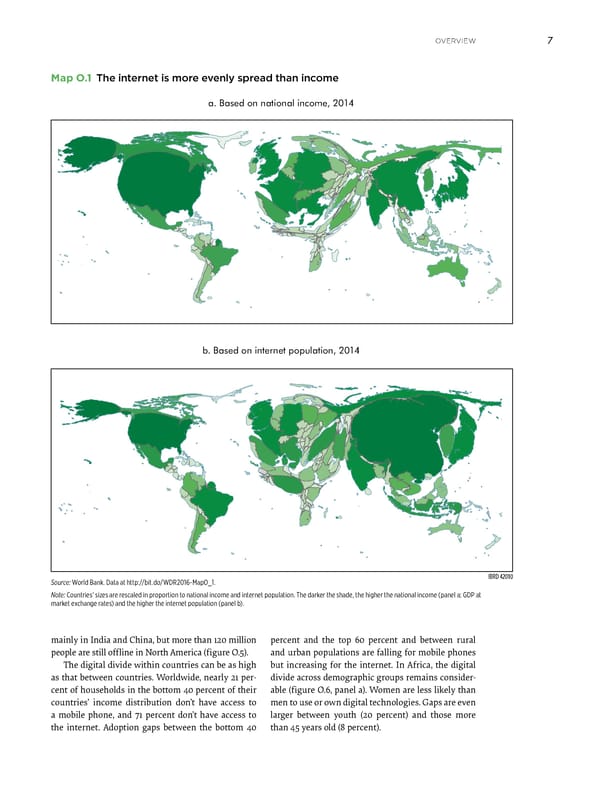overview 7 Map O.1 The internet is more evenly spread than income a. Based on national income, 2014 b. Based on internet population, 2014 Source: World Bank. Data at http://bit.do/WDR2016-MapO_1. IBRD 42010 Note: Countries’ sizes are rescaled in proportion to national income and internet population. The darker the shade, the higher the national income (panel a; GDP at market exchange rates) and the higher the internet population (panel b). mainly in India and China, but more than 120 million percent and the top 60 percent and between rural people are still offline in North America (figure O.5). and urban populations are falling for mobile phones The digital divide within countries can be as high but increasing for the internet. In Africa, the digital as that between countries. Worldwide, nearly 21 per- divide across demographic groups remains consider- cent of households in the bottom 40 percent of their able (figure O.6, panel a). Women are less likely than countries’ income distribution don’t have access to men to use or own digital technologies. Gaps are even a mobile phone, and 71 percent don’t have access to larger between youth (20 percent) and those more the internet. Adoption gaps between the bottom 40 than 45 years old (8 percent).
 World Development Report 2016 Page 17 Page 19
World Development Report 2016 Page 17 Page 19